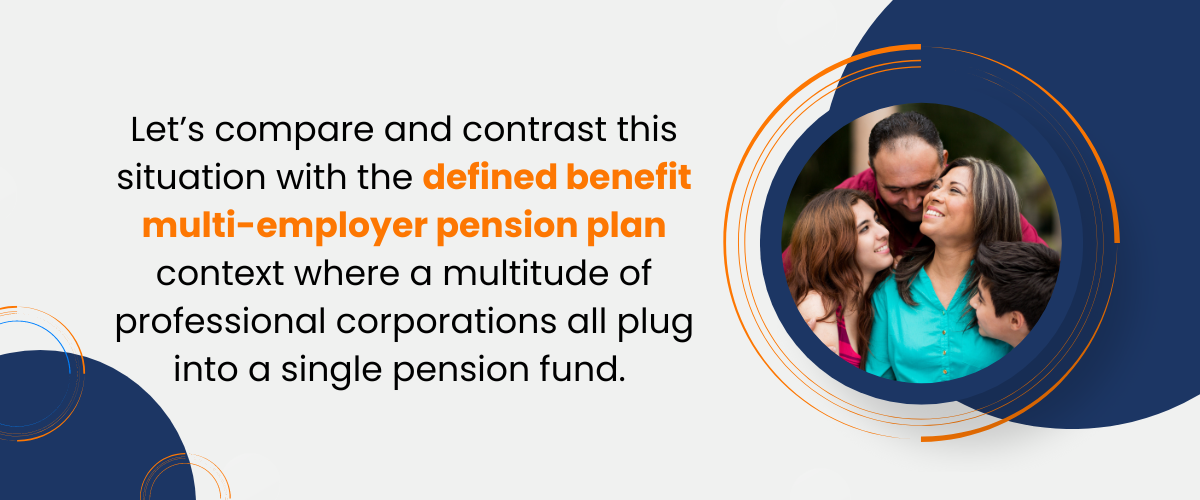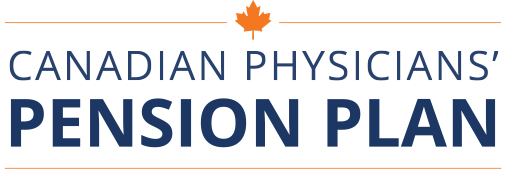Recently, physicians have been told that if they join a multi-employer pension plan, they can count on receiving a defined pension that is guaranteed for life, much like the pension arrangements available to teachers, nurses, and civil servants. Such a promise of guaranteed benefits during one’s lifetime and continuing on to any surviving spouse can be appealing.
This article (while technical in parts) attempts to understand one of the mechanisms used to provide this benefit security and compare it to alternatives.

If physicians join a defined benefit pension plan that has a single pension fund, surplus created by their death (once any death benefits payable are paid to beneficiaries) stays in the central pool and is treated as an ‘actuarial gain’ to that pool.
My gut reaction was; “wouldn’t you rather leave surplus monies to loved ones like your children and not to other physicians?”
Let’s set the context to better understand what is occurring behind the scenes when we talk about pension monies in the event of a death.
Under a Personal Pension Plan or Individual Pension Plan, the pension fund is controlled by the physician’s corporation and trustees. All contributions are made to the plan and any RRSPs are also transferred into the plan’s defined benefit account. The pension fund’s primary duty is to pay retirement benefits to the physician when she or he ceases to be employed. Upon a death, if the physician has an eligible spouse, the value of the assets in the pension fund can roll over (on a tax-sheltered basis) to the surviving spouse and the spouse can contribute those to an RRSP, for example, even if the spouse has no RRSP contribution room left.
Where the physician dies without a spouse, or tragedy strikes and the spouse passes away in the same incident as the physician, the pension assets typically go to the designated beneficiaries on record, which, traditionally would be the physician’s children. Under the Income Tax Act (Canada), taxation occurs in the hands of the [children] beneficiaries and not within the Estate of the deceased physician.
A special rule occurs when the children happen to be additional plan members because they received compensation from the medical professional corporation in exchange for rendering services. Where death occurs the assets in the pension fund stay in the pension fund and are now available to fund the pension of the children. In that case, there is no taxation upon death at all. 100% of the retirement money the physician had stored for her or his pension continue to grow free of taxation inside the pension fund for years to come.

If death occurs and a spouse exists, the commuted value of the promised pension benefit rolls over to the spouse, if death occurs prior to retirement. However, if there is surplus in the pension fund, only the commuted value rolls to the spouse’s RRSP, the rest stays in the central pool.
If death occurs while in retirement, and presumably the physician selected a joint and survivor pension, some or all of the monthly benefits continue to be paid to the surviving spouse for the duration of the spouse’s life. However, if a “double death” occurs, the rules are different: here the monthly benefits can be paid to the designated beneficiaries, but only for the remaining months of the 5 year ‘guarantee’ period.
Example: Physician A retires at 65 and has a Spouse B. A&B have two children D and E.
Dr. A selected a Joint & Survivor Pension with a 80% replacement rate. This means that while Dr. A is alive, she gets a monthly pension of say, $10,000 per month but upon her death, B gets $8,000 per month.
Dr. A begins the pension in 2024 at age 65, but passes away 3 years later in 2027 with B due to a car accident. Under the multi employer pension plan rules, the $10,000 monthly benefit would be payable (to be shared 50% – 50% between D and E) for the 24 months remaining in the 5 year guarantee period.
Let’s imagine that this represents total outlays of cash of $240,000. However, the commuted value of Dr. A’s pension is roughly $3,000,000. This means $2,760,000 will stay in the central pension fund as an ‘actuarial gain’ that benefits other physicians. Had death occurred in Year 6, the children D and E would be entitled to nothing at all. Here’s another way of putting it:
| Multi Employer Impact | Personal Pension Plan Impact | |
| Paid to family beneficiaries | $240,000 | $3,000,000 |
| Kept by fund (strangers) | $2,760,000 | 0 |
.
In the case of the Personal Pension Plan, either the children D & E get the full $3,000,000 if they are also members of the plan without immediate taxation, or they get the full $3,000,000 but have to pay tax personally on what they each received (let’s say 50% on $1.5 M each).
While I can understand the “windfall” benefit of capturing wealth of deceased physicians to create greater benefit security for the retired physicians under the multi-employer pension plan, it does come at the cost of depriving the children of the deceased physicians of family money. The irony is that because this type of plan is “defined benefit” in nature, even if large sums of surplus build up as physicians pass away due to increased mortality, the survivors are not automatically entitled to immediately benefit financially from these excess dollars. The promised pension cannot be increased in any meaningful way since tax laws contain limits on maximum benefits.
As they often say, the “devil is in the details”. If only unsuspecting physicians knew what they are being sold, many would be just as flabbergasted as I was when I heard of this.
